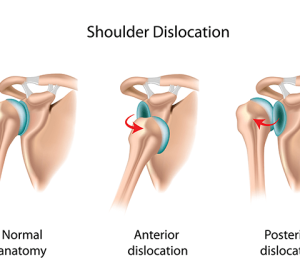Dr Amit Saoji | Orthopedic Surgeon In Nagpur | Orthopedic Doctor in Nagpur
Recurrent Shoulder Dislocation In Nagpur
Home / Recurrent Shoulder Dislocation In Nagpur

Recurrent Shoulder Dislocation
The shoulder is that the most transportable joint in your body. It helps you to elevate your arm, to rotate it, and to achieve up over your head. it’s able to flip in several directions. This larger vary of motion, however, will cause instability.
Shoulder instability happens once the pinnacle of the higher os longum is forced out of the shoulder socket. This usually happens as a results of a fulminant injury, like a fall or accident.
Once a shoulder has disjointed, it’s at risk of repeat episodes. once the shoulder is loose and slips out of place repeatedly, it’s known as chronic shoulder instability.
Anatomy
Your shoulder is formed from 3 bones: your higher os longum (humerus), your os (scapula), and your os (clavicle).
The head, or ball, of your higher os longum fits into a shallow socket in your os. This socket is termed the glenoid. sturdy animal tissue, known as the shoulder capsule, is that the ligament system of the shoulder and keeps the pinnacle of the higher os longum focused within the glenoid socket. This tissue covers the enarthrosis and attaches the higher finish of the os longum to the os.
Your shoulder conjointly depends on sturdy tendons and muscles to stay your shoulder stable.
Description
When the ball of the higher arm comes part out of the socket, this is often known as a luxation. a whole dislocation suggests that the ball comes all the reply of the socket.
Once the ligaments, tendons, and muscles round the shoulder become loose or torn, dislocations will occur repeatedly. Chronic shoulder instability is that the persistent inability of those tissues to stay the arm focused within the shoulder socket.
Cause
There square measure 3 common ways in which a shoulder will become unstable:
Shoulder Dislocation
Severe injury, or trauma, is usually the reason behind associate degree initial shoulder dislocation. once the pinnacle of the arm bone dislocates, the socket bone (glenoid) and therefore the ligaments within the front of the shoulder square measure usually harmed. The labrum — the animal tissue rim round the fringe of the glenoid — may additionally tear. this is often ordinarily known as a Bankart lesion. a primary dislocation will result in continued dislocations, giving out, or a sense of instability.
Hyperlaxity
Some individuals with shoulder instability have not had a dislocation. Most of those patients have looser ligaments in their shoulders. once this accrued movability is simply your traditional anatomy, it’s known as hyperlaxity.
Sometimes, the movability is that the results of repetitive overhead motion. Swimming, tennis, and volleyball square measure among the sports requiring repetitive overhead motion that may stretch out the shoulder ligaments. many roles conjointly need repetitive overhead work.
Looser ligaments will build it laborious to keep up shoulder stability. Repetitive or trying activities will challenge a weakened shoulder. this may lead to a painful, unstable shoulder.
In a tiny minority of patients, the shoulder will become unstable while not a history of injury or repetitive strain. In such patients, the shoulder could feel loose or dislocate in multiple directions, that means the ball could dislocate out the front, out the rear, or out rock bottom of the shoulder. this is often known as multidirectional instability. These patients have naturally loose ligaments throughout the body and should be flexile.
Treatment
Chronic shoulder instability is usually initial treated with medical procedure choices. If these choices don’t relieve the pain and instability, you’ll would like surgery.
Nonsurgical Treatment
Your doctor can develop a treatment conceive to relieve your symptoms. It usually takes many months of medical procedure treatment before you’ll tell however well it’s operating. medical procedure treatment usually includes:
Activity modification. you need to build some changes in your style and avoid activities that worsen your symptoms.
Non-steroidal medicine medication (NSAIDs). medicine medication like pain pill, ibuprofen, and Naprosyn will cut back pain and swelling.
Physical medical aid. Strengthening shoulder muscles and dealing on shoulder management will increase stability. Your healer can usually style a further home exercise program for your shoulder.
Surgical Treatment
Surgery is obtainable to patients with perennial dislocations to repair torn or stretched ligaments therefore the liagments square measure higher able to hold the enarthrosis in situ.
Arthroscopy. surgical operation could be a minimally invasive procedure wont to repair soft tissues within the shoulder. Your medico can look within the shoulder with a small camera and perform the surgery with special pencil-thin instruments. surgical operation could be a same-day or patient procedure.
Open Surgery. Some patients may have associate degree open surgical operation. This involves creating associate degree incision over the shoulder and playing the repair beneath direct mental image.
Rehabilitation. once surgery, your shoulder is also immobilized briefly with a sling.
When the sling is removed, you’ll begin exercises to rehabilitate the ligaments. These exercises can improve the vary of motion in your shoulder and stop scarring because the ligaments heal. Your healer can bit by bit expand your rehailitation set up by adding exercises to strengthen your shoulder.
